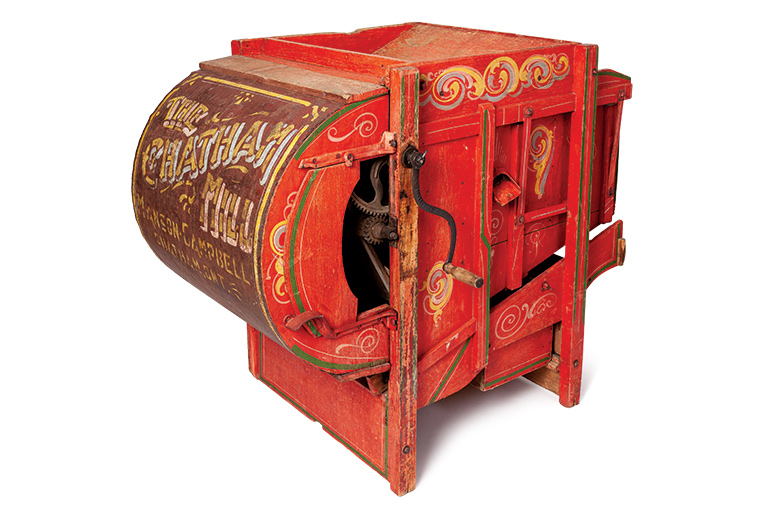Cheesy Money
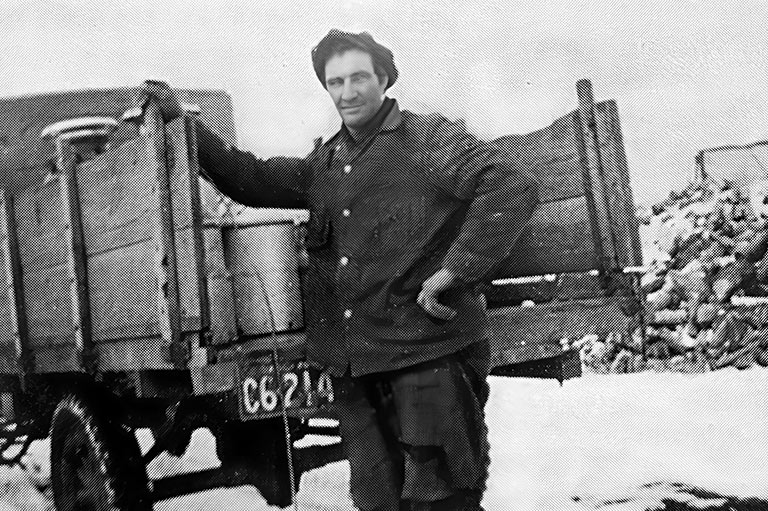
During the late nineteenth and early twentieth centuries, paper money in Canada was backed by hard assets — valuables such as bricks of gold. In the 1930s, however, folks in the town of LeRoy, Saskatchewan, used money backed by bricks of something much softer and tastier. This is the story of LeRoy’s “cheese money,” a tale of how a little small-town ingenuity — and a lot of cheddar — helped keep many local farm families off the relief rolls during the toughest times of the Great Depression.
It was 1931, and the Great Depression was hitting Saskatchewan hard. Drought, grasshoppers, and rock-bottom wheat prices had left many of the province’s farmers scrambling just to put food on their own tables. In LeRoy, a rural community 150 kilometres east of Saskatoon, a group of farmers suggested reopening an old cheese factory north of town. After all, the farmers argued, people still favoured fromage, even during the Depression, and selling milk to the factory would bring in badly needed cash for their families.
article continues below...
With 7 uniquely curated newsletters to choose from, we have something for everyone.
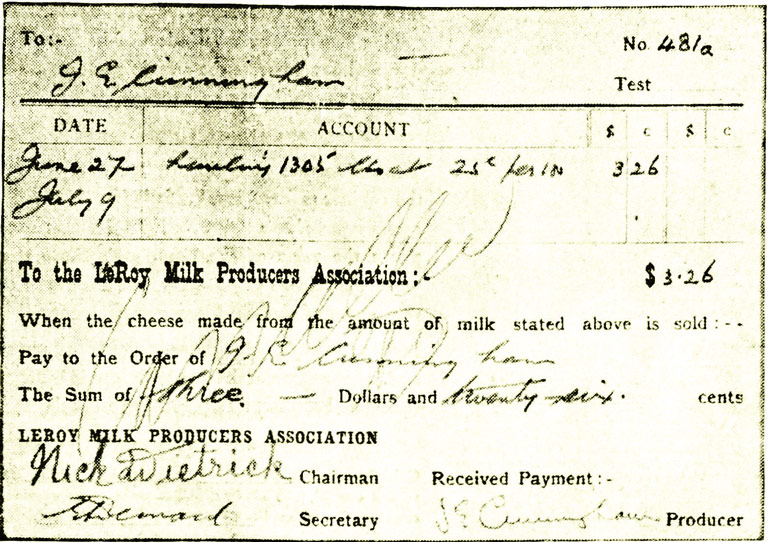
The owners of the old cheese factory agreed to rent out the building and equipment, and all the farmers around LeRoy who still milked cows pledged their support. A new dairy co-operative, the LeRoy Milk Producers Association, was formed to coordinate the milk deliveries and cheese sales, and an experienced cheese master named Herman Reinelt was hired to oversee production. But the directors of the association knew they had one enormous obstacle yet to overcome: How would they pay for all the milk that would soon come pouring into the factory’s vats?
Sales of co-op memberships had brought in some money, but not nearly enough. Nor could the factory delay payments until after the cheese was sold; few of the dairy farmers could afford to wait for six to eight weeks until the final product was ready for market. And with banks reeling from the financial chaos of a worldwide depression, a loan was completely out of the question. But what other option was there?
One of the association’s directors, Gordon B. Gregory, had an idea. Instead of cash, Gregory suggested that the factory could pay for milk using coupons — private notes, or scrip, that could be redeemed for legal-tender currency, but only after the first batches of cheese had been sold. In the meantime, if farmers needed money sooner, they could use the cheese scrip to purchase groceries or other goods from the merchants in town. All the merchants in LeRoy agreed, including the blacksmith, the mechanic at the garage, the farm-implement dealers, even the local hotel and café. With everyone in agreement, Gregory promptly sent off an order to the nearest printer for five hundred coupons — which arrived just in time to pay the farmers for their first deliveries of milk to the factory.
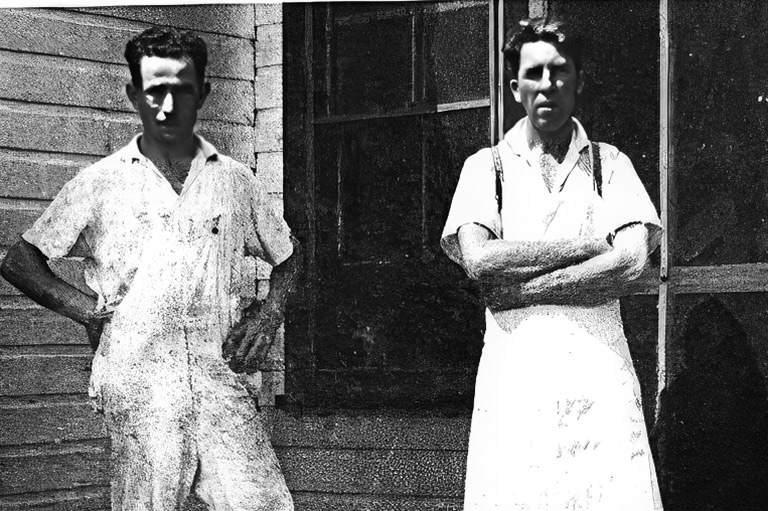
The cheese scrip was a huge success. Even though 1931 was one of the worst years for agricultural production in Saskatchewan’s history, the LeRoy Cheese Factory was able to use its scrip to buy more than 250,000 kilograms of milk, produce 24,410 kilograms of cheese, and inject the modern-day equivalent of over a quarter of a million dollars into the local farm economy, all without having to borrow a single cent. By year’s end every coupon was redeemed, every farmer and merchant paid, and the association even had enough money left over to provide each of its members with a generous dividend cheque. Not surprisingly, when 1932 rolled around, the LeRoy Milk Producers Association did not hesitate; an even bigger stack of coupons was ordered and ready for the start of the new production season that spring. (Over the winter the cows were not milked, and it was too cold to make cheese.)
Although the association had intended its scrip to be used only in LeRoy, the little coupons were so popular that they soon began to circulate in towns and villages up and down the CPR line. Farmers and townsfolk used them to settle debts with each other; merchants paid local suppliers; and even some of the wholesale businesses in Saskatoon accepted them. LeRoy’s cheese scrip was a success story, and the press ate it up. “Coupons for Cheese Used as Currency,” read a February 27, 1932, headline in the Saskatoon Star-Phoenix. Both the Star-Phoenix and the Regina Leader-Post ran full-page articles on the cheese factory and its “money.”
Advertisement
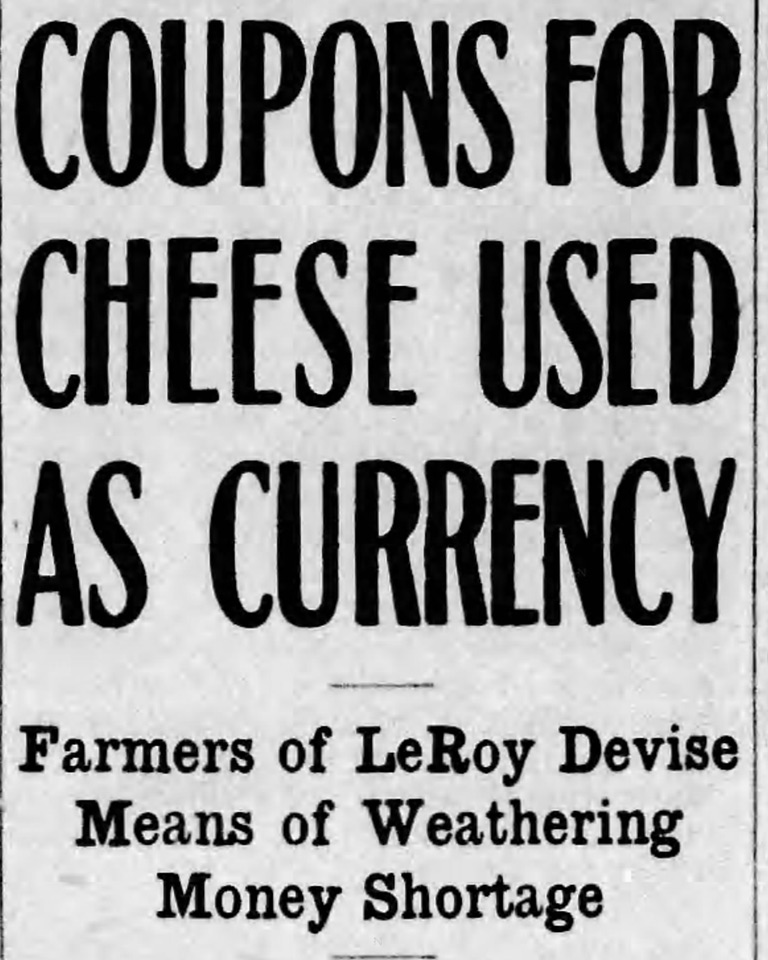
It wasn’t long before other newspapers across the country were milking the story for all it was worth. And, like the old children’s game of telephone, the headlines became more and more fanciful as the newspapers got farther and farther away. “Rabid Finance,” declared the Windsor Star in southern Ontario. “Saskatchewan Farmers Make Their Own Currency,” the Vancouver Province reported. “Saskatchewan has Cheese Money,” announced the American coin-collecting magazine the Numismatist. “If banks won’t lend you money, make your own,” was an oft-repeated phrase. One opinion piece in the Montreal Gazette even warned bankers to take careful note of what was happening in LeRoy, “where farmers are learning to get along without you.”
The LeRoy Milk Producers Association continued to issue cheese scrip for milk purchases until 1936, when the Saskatoon-based Dairy Pool bought the factory. A much larger operation, the Dairy Pool could afford to pay cash for all its milk deliveries, eliminating the need for the LeRoy factory to use its own coupons. Even still, there is evidence that some pieces of cheese scrip continued to circulate around town for years afterward. Association records show that as late as 1941 the directors were still redeeming the occasional cheese coupon issued in the previous decade.
By the early 1960s, however, the factory in LeRoy could no longer compete with cheese shipped in from larger manufacturers in eastern Canada. The plant shut down, and the LeRoy Milk Producers Association disbanded. Today, only a grassy field and a shallow dugout mark the spot north of town where the little factory once stood. But even to this day many folks in LeRoy still know the story of a time, not so long ago, when their “cheese money” was, quite literally, as good as gold.
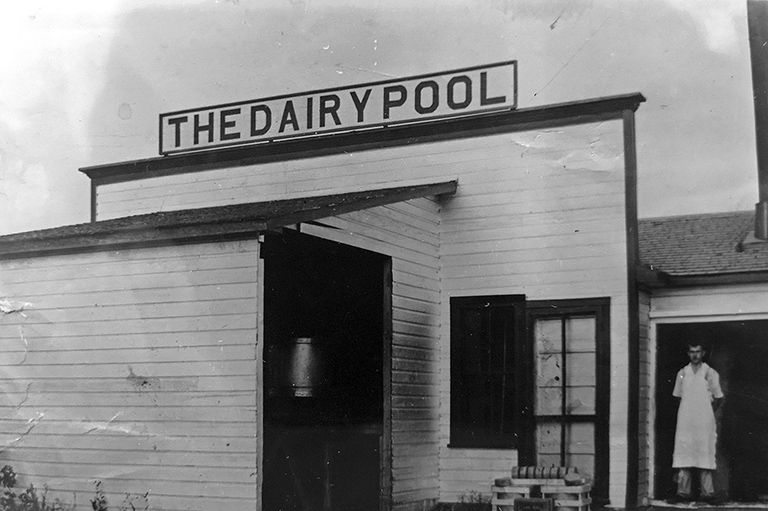
We hope you’ll help us continue to share fascinating stories about Canada’s past by making a donation to Canada’s History Society today.
We highlight our nation’s diverse past by telling stories that illuminate the people, places, and events that unite us as Canadians, and by making those stories accessible to everyone through our free online content.
We are a registered charity that depends on contributions from readers like you to share inspiring and informative stories with students and citizens of all ages — award-winning stories written by Canada’s top historians, authors, journalists, and history enthusiasts.
Any amount helps, or better yet, start a monthly donation today. Your support makes all the difference. Thank you!
Themes associated with this article
Advertisement
Save as much as 40% off the cover price! 4 issues per year as low as $29.95. Available in print and digital.


